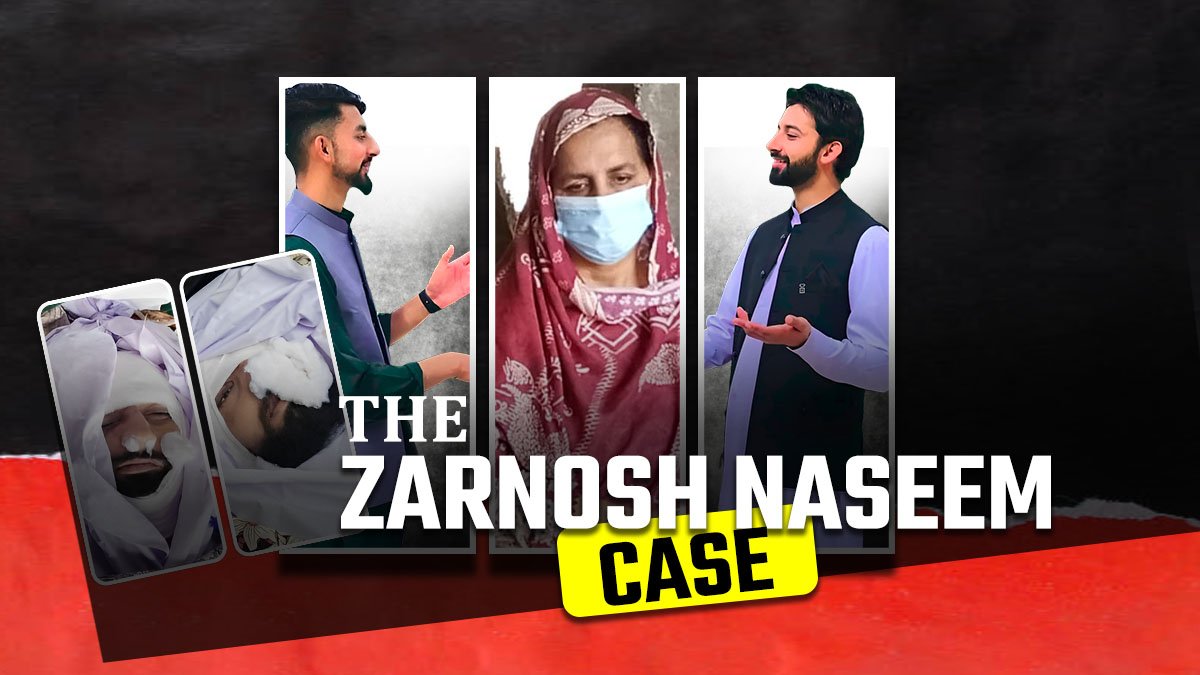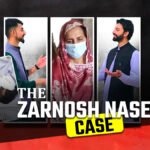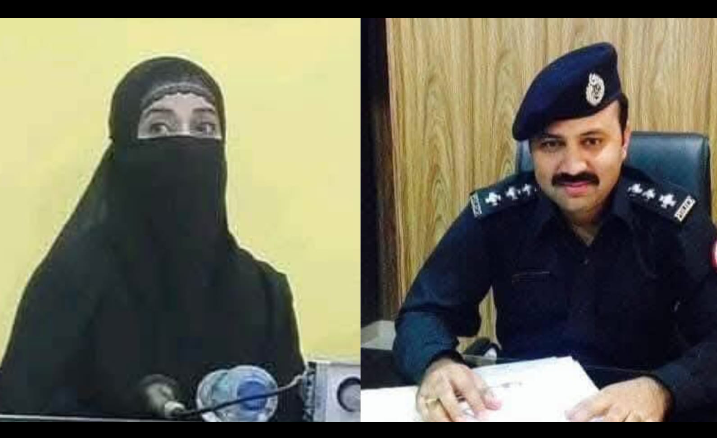The Zarnosh Naseem Case

Written By Waheeda Jammu Kashmiri
BAGH, AJK — In July 2021, a young university student from Bagh, Pakistan-administered Jammu Kashmir, made national headlines for an act that was as symbolic as it was provocative. Zarnosh Naseem, then a BS student at the Islamic University, hurled a shoe at federal minister Ali Amin Gandapur during a political rally. The act was in response to derogatory remarks made by the minister about the Kashmiri people — remarks that, for Zarnosh, crossed a line.
His arrest was immediate. His release, dramatic. When Zarnosh returned to his village days later, he was greeted not as a criminal, but as a Kashmiri folk hero — someone who had chosen defiance over silence. He did not wield weapons, but words and symbols. That, it seemed, was enough to get him killed.
Disappearance and Silence
On 13 August 2024, Zarnosh Naseem disappeared. There were no warrants, no charges, no court proceedings — just silence. His family and friends feared the worst. Protests broke out across Bagh and even reached Islamabad, where civil rights activists demanded his safe return.
On 24 August 2024, Zarnosh quietly returned home. But it was not over.
In November 2024, Zarnosh released a public message, directly addressing the Kashmiri people. In it, he revealed that Pakistani intelligence agencies had repeatedly pressured him to spy on his own people — a task he firmly refused. For rejecting these demands, he said, the authorities falsely accused him of involvement in the murder of a police officer in Shujaabad, someone he said he neither knew nor had ever seen.
“I was continuously being forced to betray my own people,” he said. “Because I refused, they blamed me for a murder I had nothing to do with.”
Zarnosh warned that the state was intentionally creating chaos in Pakistan-administered Jammu Kashmir to justify a heavier military presence.
“Such conditions are being deliberately created to provide justification for the deployment of more security forces.”
He ended his message with an apology to his people, saying he had not been able to speak earlier because of being displaced and under threat.
This message — largely ignored at the time — would take on a haunting relevance just months later, in April 2025, when his name would appear again in police narratives, this time not as a whistleblower, but as a “terrorist.”
Death in Rawalakot
On May 29, 2025, authorities announced a “successful counter-terror operation” in Rawalakot. Among the dead were Zarnosh Naseem and his younger brother, Jibran. The police — joined by state-aligned journalist Umar Khayyam — claimed Zarnosh had first carried out a suicide attack, then lobbed grenades, and finally opened fire on security forces. His death was declared a victory against terrorism.
But the narrative quickly began to unravel.
Social media activists from AJK, reporting from the aftermath, noted severe inconsistencies. Photographs of the bodies raised questions: Zarnosh’s corpse bore signs inconsistent with a suicide blast — one of his eyes was missing, yet his face remained relatively intact. Meanwhile, a police officer at the scene had both arms injured, fuelling speculation that a grenade might have exploded in his own hand rather than being thrown by Zarnosh.
These observations cast doubt over the official version of events.
Grief and Demands for Justice
On June 9, members of the Jammu Kashmir Joint Awami Action Committee, including prominent figures like Umar Nazir Kashmiri and Imtiaz Aslam, visited the grieving family in Bagh. They demanded the formation of a judicial commission — one led by High Court judges — to investigate the killings of Zarnosh, Jibran, and six others, including a police constable, Sajjad.
Three days later, Zarnosh’s mother, along with other activists, submitted a request to the Deputy Commissioner of Bagh to initiate an independent inquiry. Her next stop was the Press Club Bagh, where she hoped her voice would be amplified. Instead, the doors were closed. The club president, Akmal Aarif — reportedly out on bail in a murder case — ordered the facility shut for the day. Why a man with such a background leads a press body remains an unanswered question.
On June 23, she attempted to address journalists again at the Hari Ghal Press Club. It too was locked. With no platform left, she announced a citywide protest in Bagh for June 30.
A Mother’s Protest
The protest was held as planned. Residents of Bagh came out in solidarity, their demands clear: form a judicial commission to investigate the deaths of eight Kashmiri citizens and bring the truth to light.
But even peaceful dissent was met with threats. On the same day, DSP Shafiq Mughal reportedly warned Ghazi Khurram Abbasi — a senior member of the Joint Awami Action Committee — that he would face “the same fate as Zarnosh Naseem” if he did not stop speaking about public rights.
A Test for Accountability
The killing of Zarnosh Naseem has left behind a web of disturbing questions. Was this a case of radicalisation turned deadly, or a tragic consequence of state overreach and the silencing of dissent? Why was no trial conducted? Why were journalistic platforms locked when a grieving mother tried to speak?
His family — and many in AJK — still await answers. What they are demanding is not revenge — only truth.
About Author











